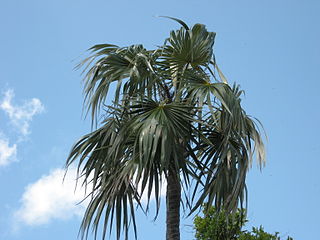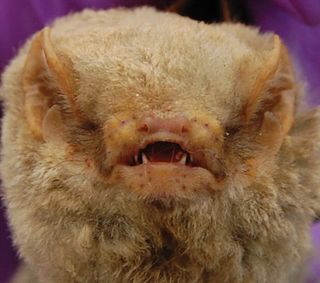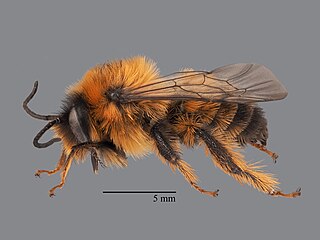
A stabilimentum, also known as a web decoration, is a conspicuous silk structure included in the webs of some species of orb-web spider. Its function is a subject of debate.

Coccothrinax is a genus of palms in the family Arecaceae. There are more than 50 species described in the genus, plus many synonyms and subspecies. A new species was described as recently as 2017. Many Coccothrinax produce thatch. In Spanish-speaking countries, guano is a common name applied to Coccothrinax palms. The species are native throughout the Caribbean, the Bahamas, extreme southern Florida and southeastern Mexico, but most of the species are known only from Cuba.

Argiope argentata, commonly known as the silver argiope or silver garden spider due to the silvery color of its cephalothorax, is a member of the orb-weaver spider family Araneidae. This species resides in arid and warm environments in North America, Central America, the Caribbean and widely across South America. In the United States, it is found at least in Southern California, Florida, Arizona, and Texas. A. argentata create stabilimenta and a unique zig-zag in its web design, and it utilizes its UV-reflecting silk to attract pollinating species to prey upon. Like other species of Argiope, its venom is not harmful to humans; however, it can be employed to immobilize its prey. A. argentata engages in sexual cannibalism either mid- or post-copulation. One aspect of particular interest regarding this species is its extinction patterns, which notably have minimal correlation with its population size but rather occur sporadically for the species.

Coccothrinax argentata, commonly called the Florida silver palm, is a species of palm tree. It is native to south Florida, southeast Mexico, Colombia and to the West Indies, where it is found in the Bahamas, the southwest Caribbean and the Turks and Caicos Islands. Its natural habitat is rocky, calcareous soil in coastal scrubland and hammock communities.

The silvered bat is a species of vesper bat in the family Vespertilionidae. It is found in Angola, Burundi, Cameroon, Republic of the Congo, Democratic Republic of the Congo, Equatorial Guinea, Kenya, Malawi, Rwanda, and Tanzania. Its natural habitats are subtropical or tropical moist lowland forests and moist savanna.
The Damara woolly bat is a nocturnal insectivorous species of vesper bat in the family Vespertilionidae found in Africa. This species typically has reddish brown fur on its back and white fur on its abdomen. Its natural habitat is moist savanna, although it has also been shown to inhabit woodlands and coastal forests. These bats typically weight about 10 g, and have a low aspect ratio, as well as low wing loading.

The Helan Shan pika or silver pika is a species of mammal in the pika family, Ochotonidae. It is endemic to China where it is found in a small region of the Helan Mountains. It is listed as "Endangered" in the IUCN Red List of Threatened Species as of 2016.

Glauconycteris is a genus of vespertilionid bats found in Africa.

Stelis argentata, commonly known as the silvery stelis, is a species of orchid of the genus Stelis.

Pallas's pika, also known as the Mongolian pika, is a species of small mammals in the pika family, Ochotonidae. It is found mainly in the mountains of western Mongolia.

Lophocampa argentata, the silver-spotted tiger moth, is a species of moth in the family Erebidae. It was described by Packard in 1864. It is found from British Columbia to southern California, and east to Arizona, Nevada, New Mexico, Colorado, Utah, Wyoming and possibly to northern Mexico.

Dasypoda is a genus of bees in the family Melittidae.
Micardia argentata is a species of moth of the family Noctuidae first described by Arthur Gardiner Butler in 1878. It is found in China, Korea and Japan.

Phiala is a genus of moths in the family Eupterotidae.
The Argentata dell'Etna is an indigenous breed of domestic goat from the area of Mount Etna in the province of Catania and the Monti Peloritani in the province of Messina, in the Mediterranean island of Sicily, in southern Italy. It is raised mainly in that area, but also in the provinces of Enna and Palermo. It is named for the volcano and for its silvery grey coat. The origins of the breed are unknown; it shows similarities to the Garganica breed, and to other Italian grey breeds such as the Ciociara Grigia of Lazio and the Cilentana Grigia of Campania.
Phiala dasypoda is a moth in the family Eupterotidae. It was described by Wallengren in 1860. It is found in South Africa.

Dasypoda hirtipes, the pantaloon bee or hairy-legged mining bee is a species of solitary mining bee from the family Melittidae. It is a widespread bee which is found from Great Britain to China.
Oxylia argentata is a species of beetle in the family Cerambycidae. It was described by Édouard Ménétries in 1832, originally under the genus Saperda. It is known from Israel, the Ukraine, Iraq, Turkey, Armenia, and Syria.

Dasypoda delectabilis, the delightful pantaloon bee, is a species of solitary bee from the family Melittidae. It was described in 2023 based on a single male specimen caught in arid areas of south-eastern Iran.

Dasypoda radchenkoi, also known as Radchenko's pantaloon bee, is a species of solitary bee from the family Melittidae. It was described in 2023 in the scientific journal Osmia based on specimens caught in the limestone areas of southern Spain.














